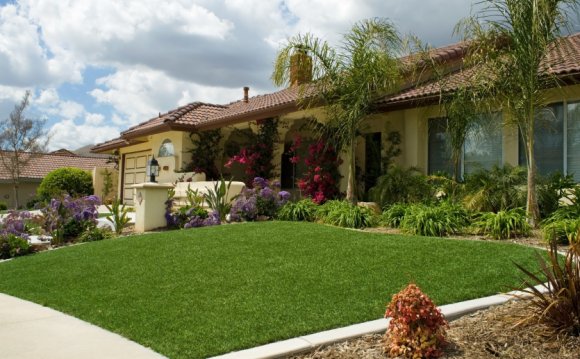
Rancho Pacifica, a gated community of spectacular multimillion dollar homes in the hills east of Del Mar, is not immune to the ravages of the California drought. Residents, who can easily afford massive water bills, have sought to reduce their water consumption — not just because they have to, but because they want to.
Brian and Frances Holloway, retired custom home builders who live in a palatial 9, 000-square-foot Mediterranean, installed artificial turf in their backyard five years ago. After Gov. Jerry Brown declared a drought emergency last year and urged Californians to reduce their water consumption by 20%, the couple decided to get rid of their water-sucking front lawn as well.
Not so fast, said their homeowners association. Like many HOAs in upscale neighborhoods around the state, it keeps an iron grip on issues like house color, alterations, parking and landscaping. Now, the Holloways are locked in an escalating struggle with their HOA.
"They have to control everyone's life, " Brian said.
"Egos!" Frances said.
This kind of conflict is repeating itself all over lawn-addicted Southern California, where the rigid aesthetics promulgated by HOAs are colliding with California's urgent need to save water. Ten days ago, San Diego-area Democratic Assemblywoman Lorena Gonzalez proposed a bill that, sensibly, would render these fights moot.
If her bill passes, HOAs would be prohibited from fining residents for installing artificial lawns. In 2011, Brown vetoed a similar measure, saying that HOAs, not the state, should make those rules.
But we are four years into the drought, and Gonzalez hopes Brown will embrace it this time. Last year, after all, he signed bills forbidding HOAs to penalize residents who stop watering or who replace lawns with low-water plants. (A spokesman for the Community Associations Institute told me that his group opposed the 2011 legislation but had not yet taken a position on this bill.)
::
The knee-jerk reaction against artificial turf, Gonzalez said, is based on the low-quality stuff we remember from miniature golf courses. She knows from all her precinct walking, though, that these days you can't tell the difference between real and fake grass.
"Today's products are not like they were even five years ago, " said Val Buonaiuto, 72, who moved to Carlsbad after retiring as chief executive of Hitachi Instruments in San Jose. "You literally have to get down on your hands and knees to tell the difference."
Buonaiuto had planned to install about 450 square feet of turf in his frontyard for about $5, 000. It would have been hidden by borders of drought-resistant shrubs. His HOA turned him down, but has formed a committee to study the issue.
"When you ask them, 'What do you not like about synthetic grass, ' they say, 'I don't like the way it looks, '" Buonaiuto said. "'What don't you like about the way it looks?' People just can't say."
Some opponents have suggested that artificial turf is bad for the environment because it could impede runoff. But Buonaiuto, who is on his HOA's study committee, said he's found at least 70 studies concluding that high-quality synthetic grass is safe and environmentally friendly.
Another Carlsbad resident, James Zemel, spent about $14, 000 to install fake lawns in his front and backyards. His water usage has plummeted, and his monthly bill has dropped from about $100 to $38. He no longer pays a gardener. His water district sent him a letter thanking him for his conservation efforts.
His HOA, however, has demanded that he remove the turf from his frontyard. If he does not, wrote the manager of his association in an email, he will be subject to "hearings, fines and legal action."
"They're on the wrong side of this, " Zemel said Wednesday, standing on his very, very green front lawn. On Thursday, his HOA notified him that artificial lawns will be reconsidered at the annual meeting in May.















